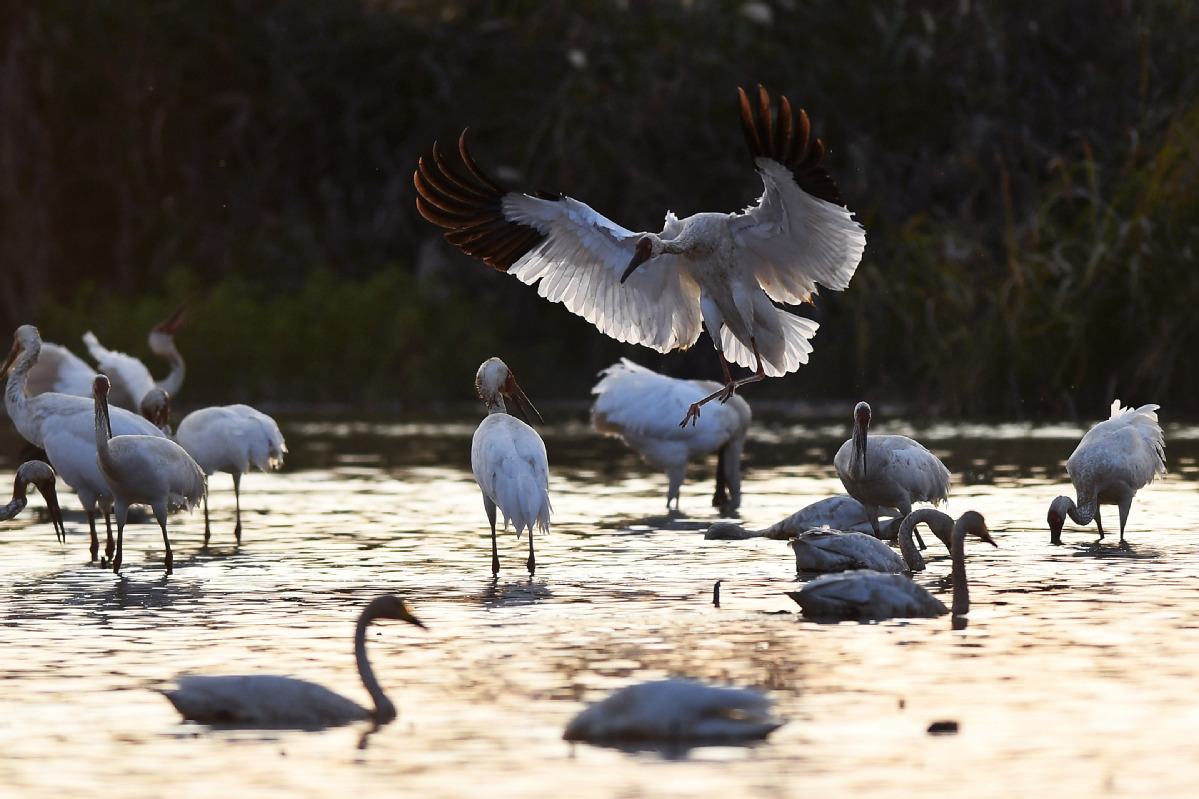Yangtze witnesses a green renaissance






Wildlife protection
For the past four years, Zhou Haiyan, a journalist turned conservationist in Nanchang, Jiangxi province, has been expanding a lotus field to accommodate migratory Siberian white cranes. The species is listed by the International Union for Conservation of Nature as critically endangered.
These birds, which breed in the Yakutia region of Russia, spend winter in the Yangtze River Valley, especially the wetlands around Poyang Lake-one of the river's main bodies of water.
In 2017, Zhou and a group of volunteers rented the 200,000-square-meter lotus field south of the lake near Nanchang and adapted it to form a suitable conservation area for the cranes.
"With the support of the government, the conservation area more than tripled in size last year, during which we recorded more than 2,800 white cranes," Zhou said.
This area is just one of many small wetlands on the Yangtze and Poyang Lake that the Jiangxi government has tried to protect and restore in recent years. The authorities have allocated 50 million yuan to compensate farmers whose produce has been eaten by birds.
Qian Fawen, an ornithologist with the National Forestry and Grassland Administration, told Jiangxi Daily that last month Poyang Lake saw the highest number of migratory birds for a decade.
"The Yangtze fishing ban and wide-ranging conservation work have increased the food supply for migratory birds, while demonstrating that the environment has improved," Qian said.
While Zhou's focus is on the Siberian white crane, in Shanghai, conservationist Liu Jian is concerned about another endangered species-the Chinese sturgeon.
The fish, which dates to prehistoric times, lives mainly in the Yangtze, particularly its estuary. On reaching maturity, it swims more than 1,000 km upstream to breed, with baby sturgeon swimming to the river mouth.
Liu, director of the Shanghai Aquatic Wildlife Conservation and Research Center, said: "The center has seen baby sturgeon swimming to the estuary in only two of the past seven years of monitoring. Protecting the fish requires efforts from all provinces along the Yangtze."
In May, Shanghai legislators passed a new law protecting the Chinese sturgeon, emphasizing regional cooperation and ordering an annual report on the status of the species.
A cross-regional system is being established to arrange protection and artificial propagation for the diminishing sturgeon population.




















